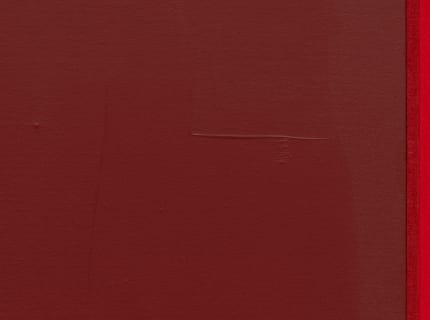“The idea of lack can be turned on its head in order to be perceived as pure potential and opportunity. That maybe relates directly to African American improvisation and creative utility, to working inventively with spare means. It speaks to an ability to refine or hone in, in my case on a line or consideration of proportion.”
–Jennie C. Jones
The semiotic possibilities inherent in a passing tone, a non-chordal interstice between two dominant chords, hold both the capacity to conjoin and the potential to rebuff its modal order. A visit to Jennie C. Jones’s Passing Tones and Broken Chords at Alexander Gray Associates outpost in Germantown, New York, finds her not merely continuing to mine the juncture of sonic and sculptural forms, but playing within the fertile furrow of negative space between rigid hegemonic structures. This is radicality, in which visual pauses bespeak a non-adherence to canonical forms and allow a welcome, not inactive, opportunity for contemplation. Jones works within the scaffolding of Minimalism’s carefully delineated geometry, and yet we see the imprints of her mark-making in the careful build-up of impasto, with subtle variances in values echoing tonal shifts in music. This layering reveals quiet dissolutions and emphatic breaks that solicit a staccato somatic interrogation: a call for active listening. The paintings’ titles, applying the diction of classical notation, also reference the structured formalism within which Jones plays.
It should be noted that in all seven pieces Jones is working with acrylic on acoustic absorber panels and canvas, with the exception of one in which felt is employed as the sonic damper. This formal departure, Bright (Red) Gracenote (2020), insists on its materiality through Jones’s soaking of electric red acrylic paint into the felt, which cedes a margin to its canvas counterpart. Felt, both sonically and materially, absorbs external entities whether they be sound or fluid; here, as in all the pieces but perhaps more critically, Jones is playing with notions of pause—the aural blockage created by absorption material, the physicality lent by impasto, and conceptual pauses intent on spurring us to truly look at what we are seeing. Bright (Red) Gracenote sits alone on the wall, subverting the clamor for centrality of position, and brings to mind the foregrounding and backgrounding of aural presence, suggesting Jones’s fidelity to working with ideas of marginality. Elsewhere, Jones’s allegiance to the material punctuates Fractured Crescendo, Red Rest (2020), where restraint is interrupted by a hot pink line that transgresses the painting’s edge in a state of haste and reorientation. In Deep Structure (Oxide Rest) (2020), oxide-red bands run liminally on the outskirts of negative space. These oxide bands appear again in other pieces—as if on the beat—as visual and theoretical challenges to the panels’ mantle of silence. These punctuations evoke improvisation and engender a landscape of potential in dialogue with minimalist tenets of pared down-ness, of less-than, of lack.
Jones often alludes to jazz in describing her work; that genre’s defining tension between structure and freedom echoes throughout the exhibition. Improvisation historically—notably within jazz but also in punk, avant-garde, and electronic genres—has lent itself to a transgression of hegemonic barriers, both social and structural. Revolt against stagnation and perpetual creative innovation defy attempts at easy assimilation or strive towards defiance. Jazz musician Davey Williams notes that improvisation “is an action directed towards freedom,” not “resulting from freedom.” The freedom awarded by the ephemeral beats of rhythm allows for a vacillating revision of the structure that music theory provides. Furthermore, freedom is a safeguard against what can result from working within classical parameters: the possibility of one's work being co-opted. Jones makes a case for lack, or freedom from, as being a place of unmediated creative possibility. Her call-and-response of visual cues, from the repetitive nature of the oxide bands to the singular instance of a rocketing pink crescendo, defies easy categorization and thus evades the modular system of classical notation even while existing within its semantic brackets.
Jones’s pieces are musical rests: the inaudible yet tenderly felt spaces between active moments of sound, points of respite indicating something to come. These interludes contain opportunities, a turning from making sound to breathing, to regeneration, to ensuring the continuity of “making space” for the liminal and the marginal. The potent criticality of Jones’s work resides in her refusal of a definite center, both formally and politically. As we travel along Jones’s painted lines, we sense an active repose in the interstices, pauses that necessitate a repositioning of our bodies, our concepts, and our agency. Jones’s spare vocabulary, born of an impulse to distill, does not induce a theoretical reduction of the work for the viewer, but rather opens the horizon to what can be imagined outside of any predetermined identity.
...
Read article at brooklynrail.org.

